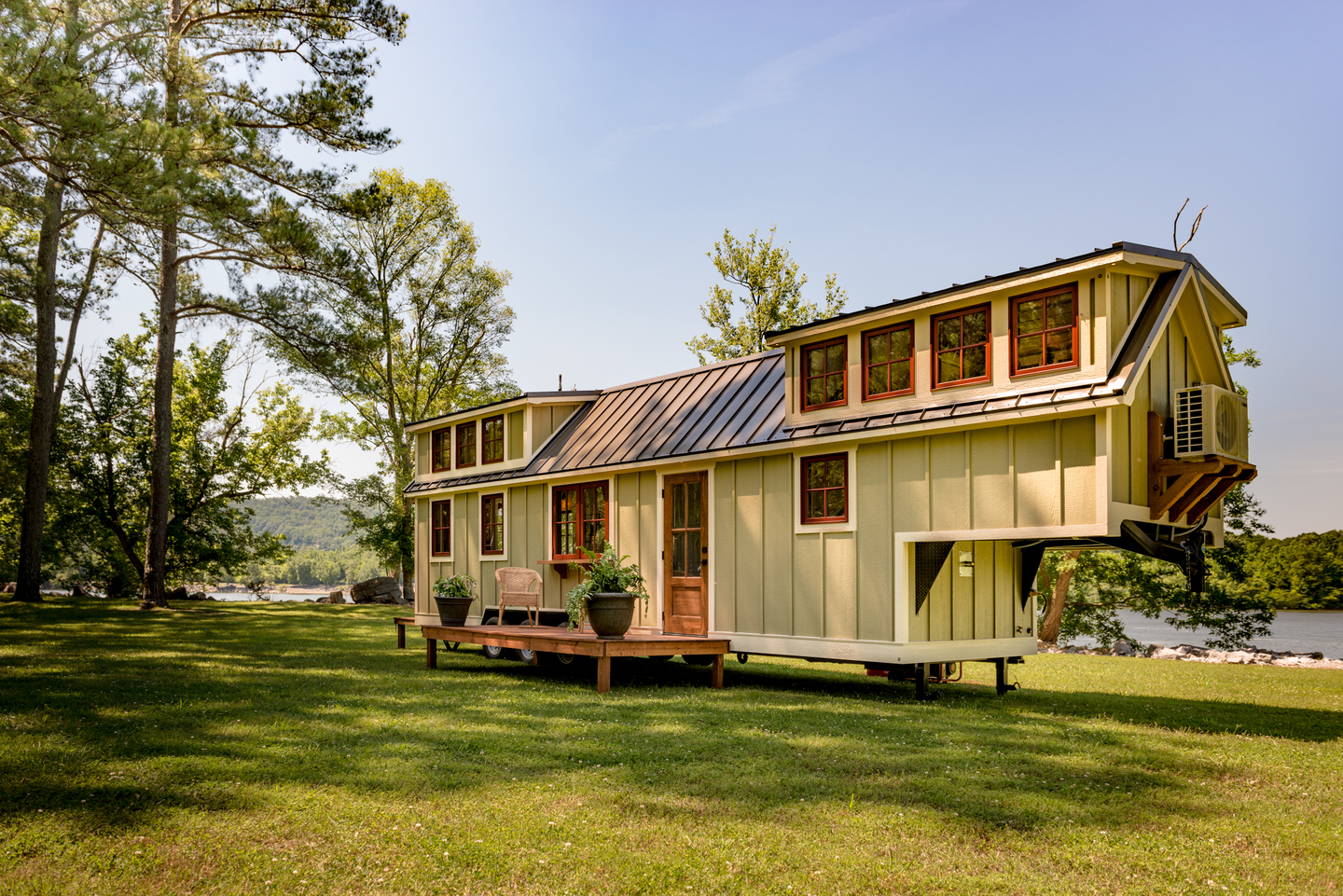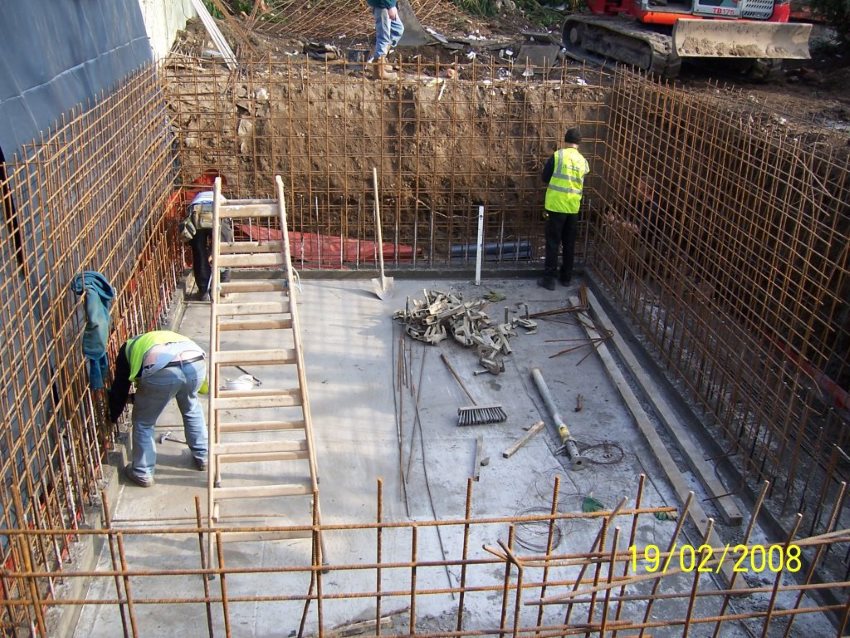Blog

5 Tips for Turning Your Tiny House Dreams Into Reality
Tiny houses are becoming increasingly popular for those who want to downsize and live a minimalist lifestyle. It’s an attractive option for those who want to save money and live more sustainably. But before you make the jump, there are a few things to consider. Given its size and unique design, working with the best builder to ensure your tiny house meets all your needs and expectations is essential.
If you’re planning to build a tiny house, this guide will walk you through the top tips for turning your dreams into reality, some considerations to keep in mind, and what to expect during the building process.
5 Tips for Building a Tiny House
Building a tiny house is more complex than you might think. It’s more than just finding the right builder and setting your budget—there are a few other vital things to keep in mind along the way. Here are five tips for getting started:
Research Local Building Regulations

The laws governing tiny house construction can vary from state to state. For instance, building a tiny house in the U.S. differs from building in Australia, so it’s essential to research the local regulations and obtain any permits you may need.
In the U.S., for example, you may need to apply for a building permit if your tiny house will be used as a permanent dwelling. It is stated in the International Residential Code that a tiny house must be no less than 400 square feet to qualify as a permanent dwelling. Therefore, it may be beneficial to have a 2 room floorplan, as this is a particularly popular tiny home size.
Meanwhile, in Australia, no rules from the Building Code of Australia (BCA) expressly apply to tiny homes. The regulations for caravans frequently apply to tiny residences because they are typically on wheels.
A tiny house is often excluded from BCA regulations if constructed as a transportable residence. However, the BCA, State, and council requirements must be followed if you’re constructing a tiny house that will be a fixed, permanent residence.
You need to be fully devoted to tiny house construction to make the time and financial investment worthwhile because achieving this is as costly and time-consuming as a standard house building.
Thus, if you plan to build your tiny dream house in Sydney, you should contact the relevant government bodies and inform them of your plans. According to award winning builders in Sydney, this will ensure that you don’t run into any legal issues down the line.
It’s always best to deal with potential issues early on before things get too far down the track. So make sure to do your due diligence and research local regulations well.
Choose the Right Builder

This is perhaps the most essential step in building a tiny house. You must choose a reliable, experienced builder who has built similar homes. The right builder can make all the difference between a successful build and one that ends in disaster. So make sure to do your research and ask around for recommendations.
Some builders will also offer customized plans and designs, so it’s worth looking into this option if you’re keen to have a truly unique house. You want to avoid ending up with a generic design that looks just like everyone else’s tiny house.
Plan Carefully
A tiny house is a significant investment of time and money, so it’s essential to plan carefully before starting the building process. Take stock of your needs and wants, identify potential obstacles, and work out a realistic budget. It’s also important to consider the size, layout, materials, and amenities you want in your tiny house.
Once you have all these details sorted, it’s time to find a builder and get the ball rolling. Make sure to fully brief them on the design requirements so they can plan accordingly. That way, you can rest assured knowing that your tiny dream house is in good hands.
Know Your Needs
When you’re building a tiny house, it’s essential to understand precisely what your needs are. Think about how many people will stay in the house, how much storage space you need, and if you plan on using any special amenities such as a compost toilet or solar panels. All these details will help your builder create a home tailored to your needs.
You should also consider how much mobility you want—will the tiny house be on wheels, or will it be a stationary structure? Consider what foundation or base you need, and make sure the builder considers this.
Stay Open to Changes
Construction is an unpredictable process, and staying open to changes is essential. A good builder should be able to work with you on any unforeseeable issue or change that may arise during the project. Flexibility is essential, so expect the unexpected and be prepared to make adjustments accordingly.
Building a tiny house is an exciting project but can also be daunting if you’re not fully prepared. Thus, instead of jumping in head first, take your time and ensure you’ve covered all the bases. With little research, planning, and patience, you can build the tiny house of your dreams with minimal stress.
5 Considerations Before Building a Tiny House
Building a tiny house requires careful planning and preparation, like any significant project. Here are five key considerations that you should keep in mind before starting the build:
Lifestyle Needs
One of the biggest mistakes tiny house owners make is planning for a lifestyle that doesn’t suit their needs. Before you start building, consider your lifestyle and how it will impact the design of your house. It could be anything from storage capacity to amenities such as compost toilets or solar panels.
If you’re unsure, speak to other tiny house owners and see what works for them. Understanding your needs will help you make more informed decisions during the build. That way, your tiny house will be designed to suit you perfectly.
Legal Requirements
It’s important to check local building regulations and zoning requirements before constructing a tiny house. There may be restrictions on the size of the structure or where it can be located that could impact your build. Ensure you fully understand these regulations, so you don’t run into any issues.
It’s also worth speaking to your local council and seeing if they have any specific requirements for tiny houses. It is especially important if you plan on parking the house in a public place like a campsite or caravan park.
Design Options
There are so many different design options when it comes to building a tiny house. The possibilities are endless, from basic cabins to luxurious mansions on wheels. Think about what kind of design you’re looking for and research different options until you find one that suits your needs.
Look into wood, steel, or aluminum materials, and consider how they might work with the overall design. You should also explore different building methods, such as stick frame construction or modular builds.
Safety Requirements
Building a safe home is paramount, so ensure all safety requirements are met before constructing. Research building codes, safety regulations in your area, and fire retardants or other materials that could help protect the house from damage.
It’s also important to consider energy efficiency, ventilation, and insulation when designing your tiny home. These will all have an impact on the comfort of the occupants.
Foundation and Mobility
The foundation of your tiny house is one of the essential elements, so you need to consider this carefully. If you plan on moving house around, make sure that it is designed to be easily transported. On the other hand, if you want a semi-permanent setup, you may want to look into foundations such as concrete or steel.
Your builder should be able to advise you on the best options for your situation and how they will impact the construction. If you plan on moving house, then make sure you factor in any restrictions or towing requirements that may be applicable.
What to Expect In Building a Tiny House
Like any significant project, building a tiny house requires careful planning and preparation. But what can you expect once the build is underway?
Knowing what to expect on the journey can help you stay motivated and ensure that your tiny house dreams become a reality with minimal stress. Here are some things to expect during the building process:
Time
Building a tiny house can take anywhere from a few weeks to several months, depending on the size and complexity of the build. It’s essential to plan and be prepared for potential delays or schedule changes.
Costs
Tiny houses are generally much cheaper than traditional homes, but there are still costs associated with building one. You should budget for materials, labor, and any other indirect costs that may arise. Do your research and shop around to get the best deal.
Finishing Touches
Once you have finished the major construction work, it’s time to move on to the finishing touches. It includes things like painting, decorating, and installing fixtures or appliances. It’s also a good idea to consider security measures such as alarms or locks.
Challenges
Building a tiny house will bring its own set of challenges, but with the right planning and research, you can be prepared for anything. Make sure you stay organized, ask questions, and double-check facts to ensure your project is successful.
Process
Unlike a traditional building, constructing a tiny house can be relatively straightforward. In a traditional build, you would need to spend more time planning and laying foundations. While with a tiny house, you can often build the entire house in one go with minimal fuss.
Final Thoughts
When it comes to building a tiny house, the possibilities are almost endless. Think carefully about your design, budget, and safety requirements before constructing. With enough determination and an eye for detail, you can make your tiny house dreams a reality. Get ready to enjoy the benefits of tiny house living!